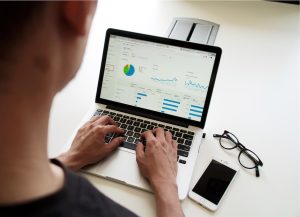Forex trading is the buying and selling of currencies with the aim of making a profit. It is a popular market with high liquidity, which makes it attractive to both novice and experienced traders. However, with high liquidity comes high risk, and it is important for traders to understand how to calculate risk in Forex, including leverage.
Risk is an inherent part of Forex trading, and it is crucial to manage it effectively to avoid significant losses. The first step in calculating risk is to determine the amount of capital that you are willing to risk. This is typically a percentage of your trading account, and it can vary depending on your trading style and risk appetite.
Once you have determined the amount of capital that you are willing to risk, you need to calculate the potential loss on a trade. This can be done by identifying the stop loss level, which is the point at which you will exit the trade if it moves against you. The stop loss level is typically set based on technical analysis, support and resistance levels, and other factors.
To calculate the potential loss on a trade, you need to multiply the size of the position by the difference between the entry price and the stop loss level. For example, if you are trading a standard lot (100,000 units) of the EUR/USD currency pair and your entry price is 1.1000 with a stop loss level at 1.0900, the potential loss would be 100 pips, or $1,000.
Leverage is a powerful tool in Forex trading, which allows traders to control a large amount of currency with a small amount of capital. However, leverage also amplifies the risk of trading, and it is important to understand how it affects risk calculations.
Leverage is expressed as a ratio, such as 1:50 or 1:100, and it determines how much capital is required to open a position. For example, if you have a trading account with $10,000 and you want to trade a standard lot of the EUR/USD currency pair with 1:100 leverage, you would only need to deposit $1,000 to open the position.
The use of leverage can significantly increase the potential profit on a trade, but it can also increase the potential loss. In the example above, if the trade moves against you and hits the stop loss level, the loss would be $1,000, which represents 10% of your trading account. However, if you were using 1:100 leverage, the loss would be amplified to $10,000, which represents 100% of your trading account.
To manage risk effectively when using leverage, it is important to use appropriate position sizing and stop loss levels. This means that you should only risk a small percentage of your trading account on each trade, and set stop loss levels that are appropriate for the market conditions and your trading strategy.
In conclusion, calculating risk in Forex trading is essential for managing your trading account and avoiding significant losses. This involves determining the amount of capital that you are willing to risk, calculating the potential loss on a trade, and understanding how leverage affects risk calculations. By using appropriate position sizing and stop loss levels, you can manage risk effectively and increase your chances of success in Forex trading.





